#order of acanthus
Text
Fantasy Guide to Interiors



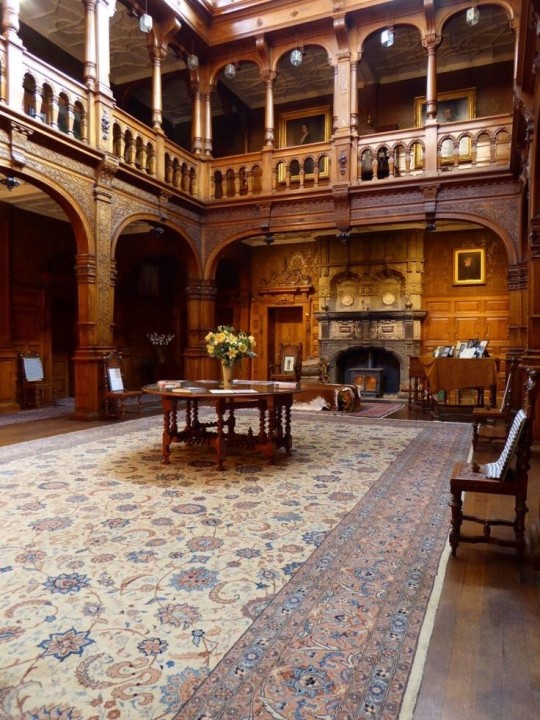
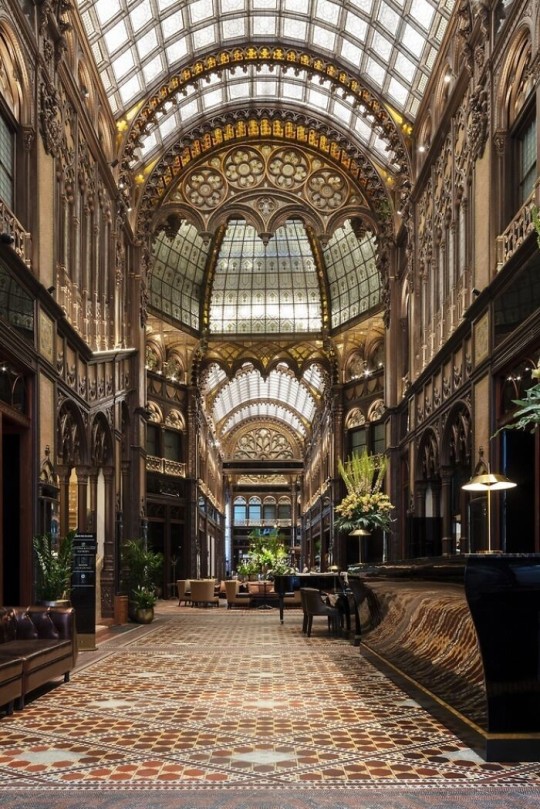
As a followup to the very popular post on architecture, I decided to add onto it by exploring the interior of each movement and the different design techniques and tastes of each era. This post at be helpful for historical fiction, fantasy or just a long read when you're bored.
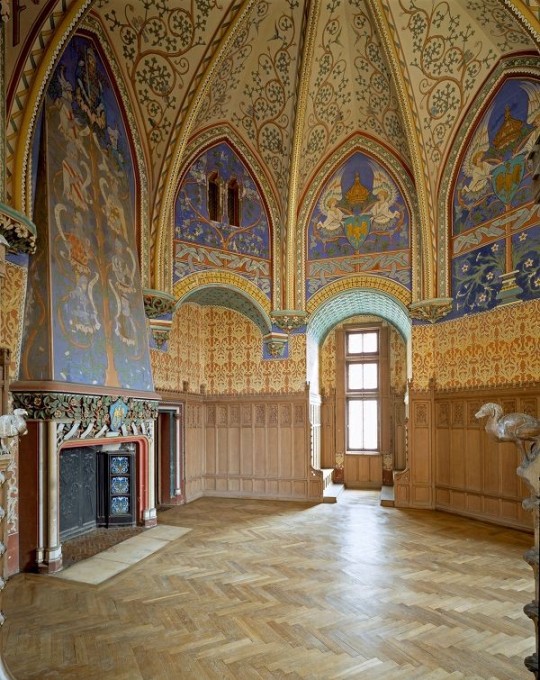


Interior Design Terms
Reeding and fluting: Fluting is a technique that consists a continuous pattern of concave grooves in a flat surface across a surface. Reeding is it's opposite.
Embossing: stamping, carving or moulding a symbol to make it stand out on a surface.
Paneling: Panels of carved wood or fabric a fixed to a wall in a continuous pattern.
Gilding: the use of gold to highlight features.
Glazed Tile: Ceramic or porcelain tiles coated with liquid coloured glass or enamel.
Column: A column is a pillar of stone or wood built to support a ceiling. We will see more of columns later on.
Bay Window: The Bay Window is a window projecting outward from a building.
Frescos: A design element of painting images upon wet plaster.
Mosaic: Mosaics are a design element that involves using pieces of coloured glass and fitted them together upon the floor or wall to form images.
Mouldings: ornate strips of carved wood along the top of a wall.
Wainscoting: paneling along the lower portion of a wall.
Chinoiserie: A European take on East Asian art. Usually seen in wallpaper.
Clerestory: A series of eye-level windows.
Sconces: A light fixture supported on a wall.
Niche: A sunken area within a wall.
Monochromatic: Focusing on a single colour within a scheme.
Ceiling rose: A moulding fashioned on the ceiling in the shape of a rose usually supporting a light fixture.
Baluster: the vertical bars of a railing.
Façade: front portion of a building
Lintel: Top of a door or window.
Portico: a covered structure over a door supported by columns
Eaves: the part of the roof overhanging from the building
Skirting: border around lower length of a wall
Ancient Greece
Houses were made of either sun-dried clay bricks or stone which were painted when they dried. Ground floors were decorated with coloured stones and tiles called Mosaics. Upper level floors were made from wood. Homes were furnished with tapestries and furniture, and in grand homes statues and grand altars would be found. Furniture was very skillfully crafted in Ancient Greece, much attention was paid to the carving and decoration of such things. Of course, Ancient Greece is ancient so I won't be going through all the movements but I will talk a little about columns.
Doric: Doric is the oldest of the orders and some argue it is the simplest. The columns of this style are set close together, without bases and carved with concave curves called flutes. The capitals (the top of the column) are plain often built with a curve at the base called an echinus and are topped by a square at the apex called an abacus. The entablature is marked by frieze of vertical channels/triglyphs. In between the channels would be detail of carved marble. The Parthenon in Athens is your best example of Doric architecture.
Ionic: The Ionic style was used for smaller buildings and the interiors. The columns had twin volutes, scroll-like designs on its capital. Between these scrolls, there was a carved curve known as an egg and in this style the entablature is much narrower and the frieze is thick with carvings. The example of Ionic Architecture is the Temple to Athena Nike at the Athens Acropolis.
Corinthian: The Corinthian style has some similarities with the Ionic order, the bases, entablature and columns almost the same but the capital is more ornate its base, column, and entablature, but its capital is far more ornate, commonly carved with depictions of acanthus leaves. The style was more slender than the others on this list, used less for bearing weight but more for decoration. Corinthian style can be found along the top levels of the Colosseum in Rome.
Tuscan: The Tuscan order shares much with the Doric order, but the columns are un-fluted and smooth. The entablature is far simpler, formed without triglyphs or guttae. The columns are capped with round capitals.
Composite: This style is mixed. It features the volutes of the Ionic order and the capitals of the Corinthian order. The volutes are larger in these columns and often more ornate. The column's capital is rather plain. for the capital, with no consistent differences to that above or below the capital.
Ancient Rome
Rome is well known for its outward architectural styles. However the Romans did know how to add that rizz to the interior. Ceilings were either vaulted or made from exploded beams that could be painted. The Romans were big into design. Moasics were a common interior sight, the use of little pieces of coloured glass or stone to create a larger image. Frescoes were used to add colour to the home, depicting mythical figures and beasts and also different textures such as stonework or brick. The Romans loved their furniture. Dining tables were low and the Romans ate on couches. Weaving was a popular pastime so there would be tapestries and wall hangings in the house. Rich households could even afford to import fine rugs from across the Empire. Glass was also a feature in Roman interior but windows were usually not paned as large panes were hard to make. Doors were usually treated with panels that were carved or in lain with bronze.
Ancient Egypt
Egypt was one of the first great civilisations, known for its immense and grand structures. Wealthy Egyptians had grand homes. The walls were painted or plastered usually with bright colours and hues. The Egyptians are cool because they mapped out their buildings in such a way to adhere to astrological movements meaning on special days if the calendar the temple or monuments were in the right place always. The columns of Egyptian where thicker, more bulbous and often had capitals shaped like bundles of papyrus reeds. Woven mats and tapestries were popular decor. Motifs from the river such as palms, papyrus and reeds were popular symbols used.
Ancient Africa
African Architecture is a very mixed bag and more structurally different and impressive than Hollywood would have you believe. Far beyond the common depictions of primitive buildings, the African nations were among the giants of their time in architecture, no style quite the same as the last but just as breathtaking.
Rwandan Architecture: The Rwandans commonly built of hardened clay with thatched roofs of dried grass or reeds. Mats of woven reeds carpeted the floors of royal abodes. These residences folded about a large public area known as a karubanda and were often so large that they became almost like a maze, connecting different chambers/huts of all kinds of uses be they residential or for other purposes.
Ashanti Architecture: The Ashanti style can be found in present day Ghana. The style incorporates walls of plaster formed of mud and designed with bright paint and buildings with a courtyard at the heart, not unlike another examples on this post. The Ashanti also formed their buildings of the favourite method of wattle and daub.
Nubian Architecture: Nubia, in modern day Ethiopia, was home to the Nubians who were one of the world's most impressive architects at the beginning of the architecture world and probably would be more talked about if it weren't for the Egyptians building monuments only up the road. The Nubians were famous for building the speos, tall tower-like spires carved of stone. The Nubians used a variety of materials and skills to build, for example wattle and daub and mudbrick. The Kingdom of Kush, the people who took over the Nubian Empire was a fan of Egyptian works even if they didn't like them very much. The Kushites began building pyramid-like structures such at the sight of Gebel Barkal
Japanese Interiors
Japenese interior design rests upon 7 principles. Kanso (簡素)- Simplicity, Fukinsei (不均整)- Asymmetry, Shizen (自然)- Natural, Shibumi (渋味) – Simple beauty, Yugen (幽玄)- subtle grace, Datsuzoku (脱俗) – freedom from habitual behaviour, Seijaku (静寂)- tranquillity.
Common features of Japanese Interior Design:
Shoji walls: these are the screens you think of when you think of the traditional Japanese homes. They are made of wooden frames, rice paper and used to partition
Tatami: Tatami mats are used within Japanese households to blanket the floors. They were made of rice straw and rush straw, laid down to cushion the floor.
Genkan: The Genkan was a sunken space between the front door and the rest of the house. This area is meant to separate the home from the outside and is where shoes are discarded before entering.
Japanese furniture: often lowest, close to the ground. These include tables and chairs but often tanked are replaced by zabuton, large cushions. Furniture is usually carved of wood in a minimalist design.
Nature: As both the Shinto and Buddhist beliefs are great influences upon architecture, there is a strong presence of nature with the architecture. Wood is used for this reason and natural light is prevalent with in the home. The orientation is meant to reflect the best view of the world.
Islamic World Interior
The Islamic world has one of the most beautiful and impressive interior design styles across the world. Colour and detail are absolute staples in the movement. Windows are usually not paned with glass but covered in ornate lattices known as jali. The jali give ventilation, light and privacy to the home. Islamic Interiors are ornate and colourful, using coloured ceramic tiles. The upper parts of walls and ceilings are usually flat decorated with arabesques (foliate ornamentation), while the lower wall areas were usually tiled. Features such as honeycombed ceilings, horseshoe arches, stalactite-fringed arches and stalactite vaults (Muqarnas) are prevalent among many famous Islamic buildings such as the Alhambra and the Blue Mosque.
Byzantine (330/395–1453 A. D)
The Byzantine Empire or Eastern Roman Empire was where eat met west, leading to a melting pot of different interior designs based on early Christian styles and Persian influences. Mosaics are probably what you think of when you think of the Byzantine Empire. Ivory was also a popular feature in the Interiors, with carved ivory or the use of it in inlay. The use of gold as a decorative feature usually by way of repoussé (decorating metals by hammering in the design from the backside of the metal). Fabrics from Persia, heavily embroidered and intricately woven along with silks from afar a field as China, would also be used to upholster furniture or be used as wall hangings. The Byzantines favoured natural light, usually from the use of copolas.
Indian Interiors
India is of course, the font of all intricate designs. India's history is sectioned into many eras but we will focus on a few to give you an idea of prevalent techniques and tastes.
The Gupta Empire (320 – 650 CE): The Gupta era was a time of stone carving. As impressive as the outside of these buildings are, the Interiors are just as amazing. Gupta era buildings featured many details such as ogee (circular or horseshoe arch), gavaksha/chandrashala (the motif centred these arches), ashlar masonry (built of squared stone blocks) with ceilings of plain, flat slabs of stone.
Delhi Sultanate (1206–1526): Another period of beautifully carved stone. The Delhi sultanate had influence from the Islamic world, with heavy uses of mosaics, brackets, intricate mouldings, columns and and hypostyle halls.
Mughal Empire (1526–1857): Stonework was also important on the Mughal Empire. Intricately carved stonework was seen in the pillars, low relief panels depicting nature images and jalis (marble screens). Stonework was also decorated in a stye known as pietra dura/parchin kari with inscriptions and geometric designs using colored stones to create images. Tilework was also popular during this period. Moasic tiles were cut and fitted together to create larger patters while cuerda seca tiles were coloured tiles outlined with black.
Chinese Interiors
Common features of Chinese Interiors
Use of Colours: Colour in Chinese Interior is usually vibrant and bold. Red and Black are are traditional colours, meant to bring luck, happiness, power, knowledge and stability to the household.
Latticework: Lattices are a staple in Chinese interiors most often seen on shutters, screens, doors of cabinets snf even traditional beds.
Lacquer: Multiple coats of lacquer are applied to furniture or cabinets (now walls) and then carved. The skill is called Diaoqi (雕漆).
Decorative Screens: Screens are used to partition off part of a room. They are usually of carved wood, pained with very intricate murals.
Shrines: Spaces were reserved on the home to honour ancestors, usually consisting of an altar where offerings could be made.
Of course, Chinese Interiors are not all the same through the different eras. While some details and techniques were interchangeable through different dynasties, usually a dynasty had a notable style or deviation. These aren't all the dynasties of course but a few interesting examples.
Song Dynasty (960–1279): The Song Dynasty is known for its stonework. Sculpture was an important part of Song Dynasty interior. It was in this period than brick and stone work became the most used material. The Song Dynasty was also known for its very intricate attention to detail, paintings, and used tiles.
Ming Dynasty(1368–1644): Ceilings were adorned with cloisons usually featuring yellow reed work. The floors would be of flagstones usually of deep tones, mostly black. The Ming Dynasty favoured richly coloured silk hangings, tapestries and furnishings. Furniture was usually carved of darker woods, arrayed in a certain way to bring peace to the dwelling.
Han Dynasty (206 BC-220 AD): Interior walls were plastered and painted to show important figures and scenes. Lacquer, though it was discovered earlier, came into greater prominence with better skill in this era.
Tang Dynasty (618–907) : The colour palette is restrained, reserved. But the Tang dynasty is not without it's beauty. Earthenware reached it's peak in this era, many homes would display fine examples as well. The Tang dynasty is famous for its upturned eaves, the ceilings supported by timber columns mounted with metal or stone bases. Glazed tiles were popular in this era, either a fixed to the roof or decorating a screen wall.
Romanesque (6th -11th century/12th)
Romanesque Architecture is a span between the end of Roman Empire to the Gothic style. Taking inspiration from the Roman and Byzantine Empires, the Romanesque period incorporates many of the styles. The most common details are carved floral and foliage symbols with the stonework of the Romanesque buildings. Cable mouldings or twisted rope-like carvings would have framed doorways. As per the name, Romansque Interiors relied heavily on its love and admiration for Rome. The Romanesque style uses geometric shapes as statements using curves, circles snf arches. The colours would be clean and warm, focusing on minimal ornamentation.
Gothic Architecture (12th Century - 16th Century)
The Gothic style is what you think of when you think of old European cathedrals and probably one of the beautiful of the styles on this list and one of most recognisable. The Gothic style is a dramatic, opposing sight and one of the easiest to describe. Decoration in this era became more ornate, stonework began to sport carving and modelling in a way it did not before. The ceilings moved away from barreled vaults to quadripartite and sexpartite vaulting. Columns slimmed as other supportive structures were invented. Intricate stained glass windows began their popularity here. In Gothic structures, everything is very symmetrical and even.
Mediaeval (500 AD to 1500)
Interiors of mediaeval homes are not quite as drab as Hollywood likes to make out. Building materials may be hidden by plaster in rich homes, sometimes even painted. Floors were either dirt strewn with rushes or flagstones in larger homes. Stonework was popular, especially around fireplaces. Grand homes would be decorated with intricate woodwork, carved heraldic beasts and wall hangings of fine fabrics.
Renaissance (late 1300s-1600s)
The Renaissance was a period of great artistry and splendor. The revival of old styles injected symmetry and colour into the homes. Frescoes were back. Painted mouldings adorned the ceilings and walls. Furniture became more ornate, fixed with luxurious upholstery and fine carvings. Caryatids (pillars in the shape of women), grotesques, Roman and Greek images were used to spruce up the place. Floors began to become more intricate, with coloured stone and marble. Modelled stucco, sgraffiti arabesques (made by cutting lines through a layer of plaster or stucco to reveal an underlayer), and fine wall painting were used in brilliant combinations in the early part of the 16th century.
Tudor Interior (1485-1603)
The Tudor period is a starkly unique style within England and very recognisable. Windows were fixed with lattice work, usually casement. Stained glass was also in in this period, usually depicting figures and heraldic beasts. Rooms would be panelled with wood or plastered. Walls would be adorned with tapestries or embroidered hangings. Windows and furniture would be furnished with fine fabrics such as brocade. Floors would typically be of wood, sometimes strewn with rush matting mixed with fresh herbs and flowers to freshen the room.
Baroque (1600 to 1750)
The Baroque period was a time for splendor and for splashing the cash. The interior of a baroque room was usually intricate, usually of a light palette, featuring a very high ceiling heavy with detail. Furniture would choke the room, ornately carved and stitched with very high quality fabrics. The rooms would be full of art not limited to just paintings but also sculptures of marble or bronze, large intricate mirrors, moldings along the walls which may be heavily gilded, chandeliers and detailed paneling.
Victorian (1837-1901)
We think of the interiors of Victorian homes as dowdy and dark but that isn't true. The Victorians favoured tapestries, intricate rugs, decorated wallpaper, exquisitely furniture, and surprisingly, bright colour. Dyes were more widely available to people of all stations and the Victorians did not want for colour. Patterns and details were usually nature inspired, usually floral or vines. Walls could also be painted to mimic a building material such as wood or marble and most likely painted in rich tones. The Victorians were suckers for furniture, preferring them grandly carved with fine fabric usually embroidered or buttoned. And they did not believe in minimalism. If you could fit another piece of furniture in a room, it was going in there. Floors were almost eclusively wood laid with the previously mentioned rugs. But the Victorians did enjoy tiled floors but restricted them to entrances. The Victorians were quite in touch with their green thumbs so expect a lot of flowers and greenery inside. with various elaborately decorated patterned rugs. And remember, the Victorians loved to display as much wealth as they could. Every shelf, cabinet, case and ledge would be chocked full of ornaments and antiques.
Edwardian/The Gilded Age/Belle Epoque (1880s-1914)
This period (I've lumped them together for simplicity) began to move away from the deep tones and ornate patterns of the Victorian period. Colour became more neutral. Nature still had a place in design. Stained glass began to become popular, especially on lampshades and light fixtures. Embossing started to gain popularity and tile work began to expand from the entrance halls to other parts of the house. Furniture began to move away from dark wood, some families favouring breathable woods like wicker. The rooms would be less cluttered.
Art Deco (1920s-1930s)
The 1920s was a time of buzz and change. Gone were the refined tastes of the pre-war era and now the wow factor was in. Walls were smoother, buildings were sharper and more jagged, doorways and windows were decorated with reeding and fluting. Pastels were in, as was the heavy use of black and white, along with gold. Mirrors and glass were in, injecting light into rooms. Gold, silver, steel and chrome were used in furnishings and decor. Geometric shapes were a favourite design choice. Again, high quality and bold fabrics were used such as animal skins or colourful velvet. It was all a rejection of the Art Noveau movement, away from nature focusing on the man made.
Modernism (1930 - 1965)
Modernism came after the Art Deco movement. Fuss and feathers were out the door and now, practicality was in. Materials used are shown as they are, wood is not painted, metal is not coated. Bright colours were acceptable but neutral palettes were favoured. Interiors were open and favoured large windows. Furniture was practical, for use rather than the ornamentation, featuring plain details of any and geometric shapes. Away from Art Deco, everything is straight, linear and streamlined.
#This took forever#I'm very tired#But enjoy#I covered as much as I could find#Fantasy Guide to interiors#interior design#Architecture#writings#writing resources#Writing reference#Writing advice#Writer's research#writing research#Writer's rescources#Writing help#Mediaeval#Renaissance#Chinese Interiors#Japanese Interiors#Indian interiors#writing#writeblr#writing reference#writing advice#writer#spilled words#writers
3K notes
·
View notes
Text
Some Roman Art Vocabulary

for your next poem/story
Acanthus - a kind of Mediterranean plant with large spreading leaves. It was used as a decorative element on Corinthian capitals and also was a symbol of death.
Amphitheater - an elliptical structure with a central arena for the staging of gladiatorial contests and animal combats.
Apse - a semicircular space within a Roman building. Typically a basilica would have an apse at one end.
Arch - a curved architectural member that spans an opening.
Atrium - the central room of a Roman house. It had a hole in the ceiling and a pool in the center of the floor to catch rainwater.
Aureus - the most valuable Roman coin, made of gold.
Barrel vault - a semicircular ceiling over parallel walls.
Basilica - a building type used for law courts and conducting business, which usually stood in the town forum. It consisted of a long rectangular hall with an apse at one end and three aisles separated by columns. The central aisle had a raised ceiling and clerestory windows. Often the exterior of the building was colonnaded.
Cameo - a relief carved from a stone that has layers of different colors, such as sardonyx.
Capitolium - the main temple for civic worship in Rome and other cities. It was dedicated to the three chief gods, Jupiter, Juno, and Minerva.
Cardo - the name of the north-south street in a Roman town laid out on the grid system.
Cavea - the rounded space of a theater containing seats for the spectators.
Colonnade - a row of columns.
Columbarium - a type of communal building to hold ash urns of the cremated. The name comes from the structure’s resemblance to a dovecote, since the urns, as well as portrait busts, were placed in niches in the walls similar to the nesting spaces in such a birdhouse.
Column - a weight-bearing architectural member that has a base, a cylindrical shaft, and a capital (ornamental top).
Concrete - a building material made of small stones or rubble (aggregate), lime mortar, water, and volcanic sand (pozzolana).
Consuls - the two chief magistrates of the Roman state, elected annually.
Cubiculum - the bedroom of a Roman house.
Damnatio memoriae - a decree by the senate that condemned an emperor and ordered that all images of him and references to him be obliterated.
Decumanus - the principal east-west street of a Roman town laid out on the grid system.
Source
More: Word Lists
#roman art#terminology#writing inspiration#writeblr#writing reference#dark academia#spilled ink#light academia#creative writing#literature#writers on tumblr#poets on tumblr#writing prompt#poetry#writing resources
57 notes
·
View notes
Text


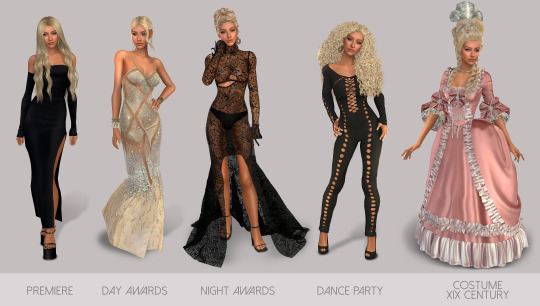
CHRISTINA AGUILERA (Look Book)
It's my first "Look Book" I don't know if I'm doing it right or if it has some kind of rules or order, but hey, I wanted to do it and here you have it. I include the CC used, if there is one that I have not included and you have questions, leave it in a comment.
CC LIST:
Full Sims: By Me // All Poses: @helgatisha
PIJAMA
Hair: @wingssims // Glasses: @pralinesims // Shirt: @plumbobsnfries
Pant: @Beto-ae0 // Slippers: Base Game
URBAN
Hair: @antosims // Earring: @blahberry-pancake // Nose piercing: @blahberry-pancake // Shirt: @plumbobsnfries // Pant: @charonlee // Boots: @seoulsoul-sims
SHOPPING
Hair: @blahberry-pancake // Earrings: @simpliciaty-cc
// Outfit: @madlensims // Bag: @charonlee // Nails: @redheadsims-cc // Footwear: @mmsims
STUDIO
Blazer and shirt: @seoulsoul-sims // Skirt: @rimings // Boots: @seoulsoul-sims // Nails: @4w25-cc
REHEARSAL PERFORMANCE
Hair: @daylifesims // Glasses: @iwitys // Necklace: @paresims // Shirt: @suzuesims // Leather Jacket: @darte77 // Leggins: @Ellesimpe // Nails: @4w25-cc // Footwear: @mmsims
PREMIERE
Hair: @antosims // Earring: @sentate // Dress: @sentate
Shoes: @unknown66irl // Nails: @4w25-cc
DAY AWARDS
Dress: @cool-content-star // Earring: @Lexel // Pearl Bracelet: @joliebean // Gold Bracelet: @leahlillith // Nails: @4w25-cc
NIGHT AWARDS
Earring: @blahberry-pancake // Dress: @cool-content-star // Shoes: @plazasims // Nails: @4w25-cc
DANCE PARTY
Earring: @blahberry-pancake // Cat Suit: @cocogamess // Shoes: @cooper322 // Nails: @4w25-cc
COSTUME XIX CENTURY
Hair - Dress - Accesories: @acanthus-sims // Neckacle: @serenity-cc
// Earring: @giuliettasims
#christinaaguilera#xtina#xtinaaguilera#liberation#music#stripped#backtobasics#bionic#lotus#s#thexperience#liberationtour#britneyspears#christinaaguilerafan#xtinafamily#follow#singer#christinaaguilerastripped#fighters#queen#teamxtina#xtinalover#love#thextour#christinaaguilerafanpage#legendtina#diva#genieinabottle#ts4#sims
197 notes
·
View notes
Text
Reference Sheets
Prime Steven and Prime Connie:

Druid:

Sweetheart (Monster Line Connie):
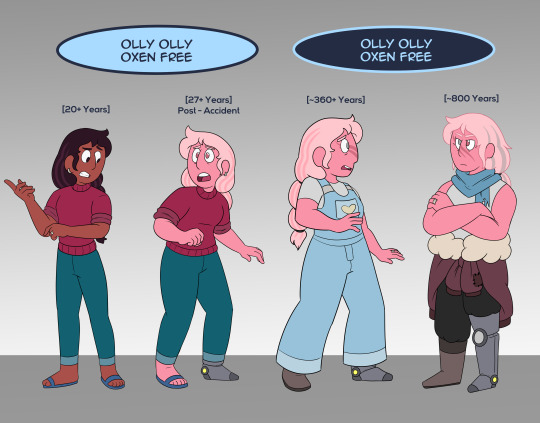
Pitaya, Betelgeuse and Hibiscus:

Willow Acanthus Maheswaran-Universe:
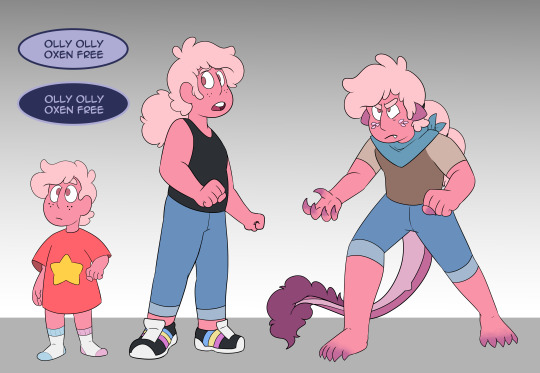
Anything below this point is a fat fucking spoiler, so if you like the element of surprise, stop reading here. References are sorted in order of timeline appearance. I will update this post as I make more ref sheets.
Chapter One: Monstrous
Uncorrupted Monster Line Gems:
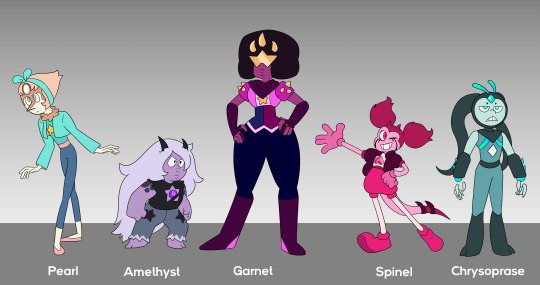
Corrupted Monster Line Gems:
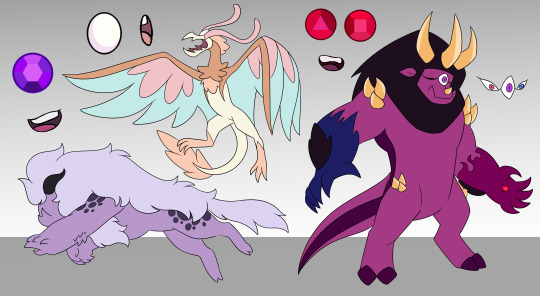
Other Plants:
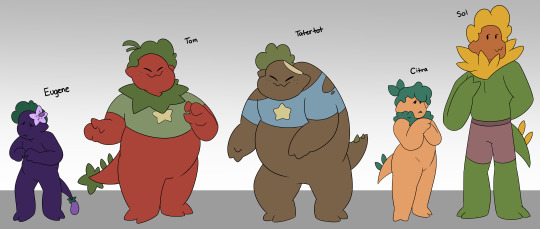
Fully Corrupted Druid:
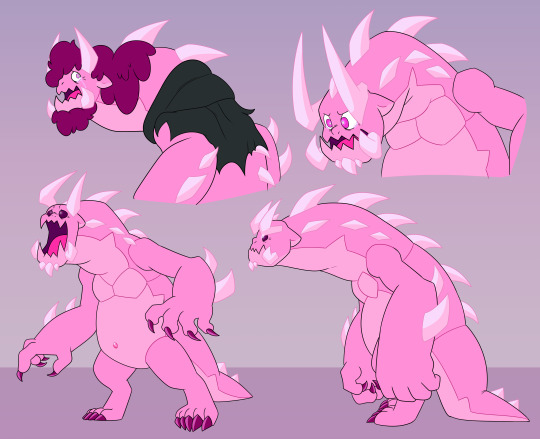
Chapter Two: Zoology
Leo:

Honey:

Zoology Line Gems:
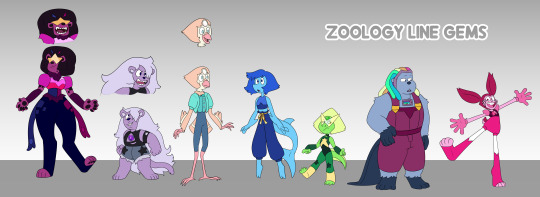
Corrupted Leo:

Chapter Three: Heartbroken
Heartbreak Line Steven:

Heartbreak Spinel:
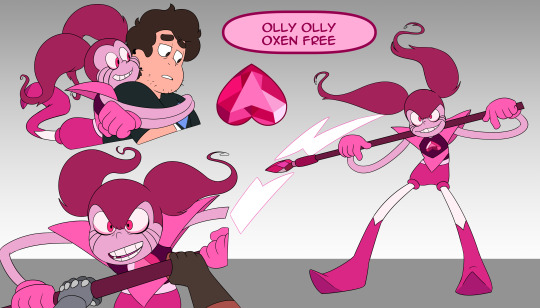
Heartbreak Line Gems:

Chapter Four: Mirrored
Sven Night Universe:

Lioness:
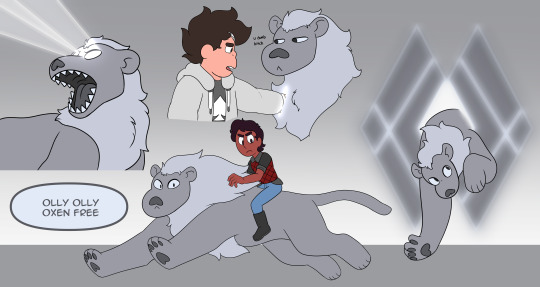
Carnelian, Tiffany Stone, and 'Mime' Spinel:

Larimar and Snowflake Obsidian (WIP):
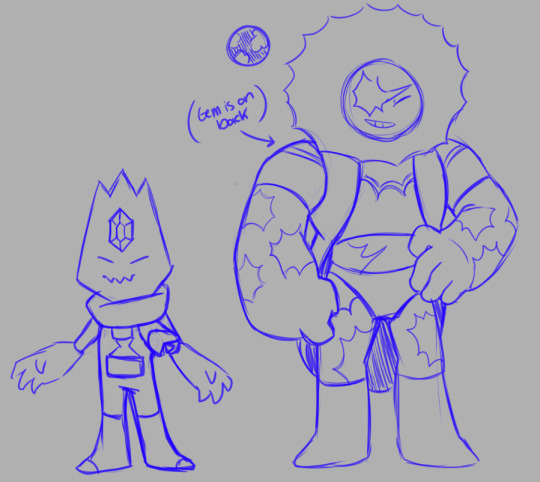
Chrysoprase:

Moissanite and Mirror Greg:

Chapter Five: Blissful
Sonny Quartz Universe:

"Slug" Sonny:
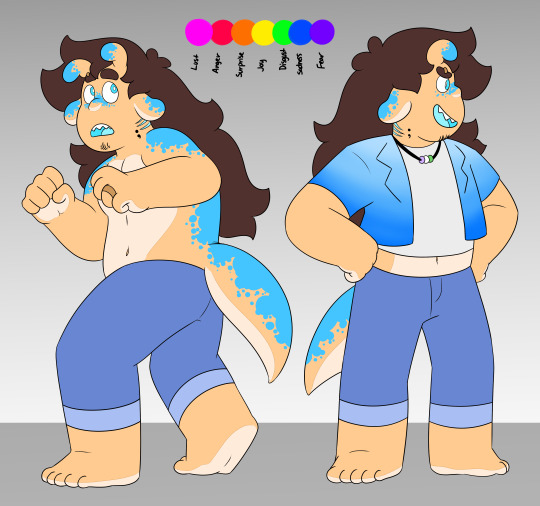
Fully Corrupted Sonny:

Chapter Six: Primal
[TBA]
Other References or Combination References
Height Chart:
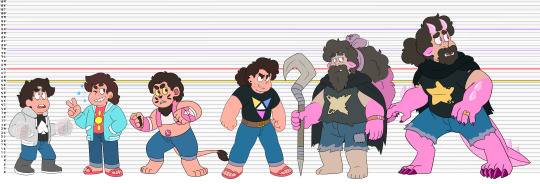
Sven and Druid Fusion (Karma):

"Corrupted" Karma:
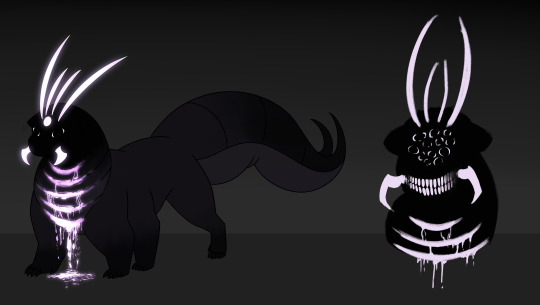
AU/niverse 'Line' Map (Partial):

Fusions Height Chart:

In order -
Aegis (Druid / HB)
Archelos (Druid / Leo)
Wanderer (Druid / Sonny)
Heartbreaker (HB / Sonny)
Bouncer (Leo / Sonny)
Karma (Druid / Sven)
Discord (HB / Sven)
Heartmender (Sven / Sonny)
??? (Sven / Leo)
69 notes
·
View notes
Photo

Temple of Saturn, Rome
The 4th century CE Temple of Saturn is situated in the north west corner of the Roman Forum of Rome and has eight majestic columns still standing. Built in honour of Saturn it was the focal point of this ancient cult and stood on the site of the original temple dedicated in c. 497 BCE, which itself had replaced the god's first shrine, the Ara Saturni. In addition, during the Republic the temple also housed the public treasury (aerarium), a function it kept, albeit in a more limited function, in the Imperial period.
Saturn is something of a mysterious figure in Roman religion. Depictions of the god in surviving art have him wearing a veil and brandishing either a sickle or a pruning knife. Perhaps a version of the Greek god Kronos, he was especially worshipped in the Saturnalia festival held every 17th of December (from at least the 5th century BCE) and which lasted several days. This was a festive occasion when people gave gifts to one another, slaves had the freedoms enjoyed by ordinary citizens, more informal clothes were worn instead of the usual toga, and there was a general round of partying and merrymaking which made it the jolliest Roman festival in the calendar; a fact which led Catullus to describe it as 'the best of times'. In later centuries the festival would metamorphose into the Brumalia festival and the similarity of its features and timing - pushed later into December in subsequent centuries - suggest an influence on the Christmas celebration.
The surviving ruins of the temple stand on a pediment of travertine blocks and are themselves composed of pieces recycled from earlier temples. The columns are of the Ionic order and eight still remain on the northern facade. The shafts of the columns are made from Egyptian granite, the two on the side from pink Aswan and the six facade ones from grey Mons Claudianus. Indicative of their differing history, three are monoliths and the others are composed of two pieces fitted together. The Ionic capitals are, in fact, the only parts made specifically for the temple and are from Thasian marble and carved in typical Late Antique style. The architrave carries an Ionic frieze of acanthus leaves and palmettes and came from the previous temple on the site, commissioned by one of Julius Caesar's generals, Lucius Munatius Plancus, in 43 BCE using spoils from the campaigns in Syria.
Within the temple once stood a cult statue of Saturn which became the centre of attention during the Saturnalia when his feet were symbolically freed from the woollen bonds that tied him up for the rest of the year. This act has led to Saturn being associated with liberation, certainly a feature of the Saturnalia festival. The inscription on the exterior of the architrave relates to the reconstruction carried out in the 360s and 370s CE and reads as follows:
SENATVS POPVLVSQVE ROMANVS
INCENDIO CONSVMPTVM RESTITVIT
(The Senate and People of Rome, restored following destruction by fire).
Continue reading...
48 notes
·
View notes
Text
Notes on Dr. Ratio: Design, Philosophy, and Culture

That's right, I'm back with another big thinkpiece! This time, I'll be doing a very long overdue analysis on Ratio and drawing notes to the real-life inspirations behind his character. I'll be having quite a bit of overlap with existing headcanon posts I've made, so if there's anything I repeat I apologize. I'll do my best to link the major posts I've written before as they come up!
I'll be splitting this piece into three different sections: design, kit and naming conventions, and miscellaneous (that gorgeous E6, his personality and backstory, statues, etc). So, without further ado, let's begin! This will be lengthy, just as a general note, and has a lot to point to, so the notes will be bulleted.
Design:
To start, Ratio has an overall blue and white theme. This immediately struck me as very Greek, especially since the colors in his chiton are of a similar shade to the national flag of Greece.
He has a modernized and modified version of the chiton and himation or chlamys, all of which are traditional articles of clothing in Ancient Greece. The chiton is the blue half with the sleeve, and and the himation is the white cloth. Both are tucked under a zone (the girdle), with it only partially hidden on one side. Usually the whole belt would be hidden under the folds of a chiton, but HYV likes their belts. An interesting note regarding the himation is that it's fastened on his left shoulder, rather than the right as it would traditionally be done.
The button fastening Ratio's himation in place is actually a Roman button! An example of one can be seen here, in the Met.
The sandals he wears are more of Greek origin than Roman, I think. It was hard to find the exact type or name, but this site points to several examples.
Naturally, the owl pauldron is a reference to Athena (Minerva in Roman mythology), the Greek goddess of wisdom and strategy. This is a motif that also shows up on Ratio's codex.
His hairpiece is a representation of a laurel wreath, which were awarded to skilled, accomplished people as a symbol of triumph -- though usually intended for victors of athletic or musical and poetic competitions (and for the Romans, martial victory), they have also come to represent academic success and achievement.
The column he summons in his Ultimate is a composite column, noted by the large volutes (reminiscent of an ionic order) as well as the acanthus leaf motifs similar to a corinthian column.
Similarly, acanthus leaves -- a popular design in Ancient Greece and Rome -- make repeated appearances on Ratio's outfit. We can see some sort of acanthus leaf with volutes on his belt buckle, acanthus leaves on his bracers, and also on the hem of his pants.
Throughout his clothing (particularly the flowy bits) we see endless vitruvian scrolls (also called wave scrolls) on his cape wings and the hem of his chiton. Though I didn't see anything suggesting symbolism, it was a very popular design in Ancient Greece all the same, and was thought to represent the Meander, a winding river in Turkey.
His alabaster headpiece looks nothing like him, but I wonder if it could possibly be modeled after Athena instead? The hair is long enough to be braided and curled into a bun, and it does look vaguely similar to some statues and depictions of Athena. It's hard to say.
He wears a signet ring! While the use of signet rings in academics is largely a tradition within the US and Canada from my research, they date back to the Bronze Age of Ancient Greece and were popular in Ancient Rome as symbols of status. Interestingly, Ratio wears his on his left middle finger, rather than his right (which would traditionally symbolize power and strength).
Ratio has a few gems on his person: an amethyst on his gold neckpiece (??? what is that thing, I still have no idea), and a sapphire or lapis lazuli on each bracer and sandal. Amethysts traditionally represent clarity of mind, while both sapphire and lapis lazuli can symbolize wisdom. Interestingly, all three stones have names of Greek or Latin origin.
Seriously, what is that neckpiece? It has wings that sit below the amethyst, and it occurred to me that it looks vaguely similar to a caduceus, with the chain being reminiscent of the intertwined snakes. It should be noted that the caduceus is not a medical symbol, as is commonly misunderstood here in the US, but rather a symbol of Hermes. It has associations with wisdom, eloquence, deception, and trade, which obviously don't all apply to Ratio as a character, but given his alignment with the Intelligentsia Guild/IPC and his role in the Penacony arc, it's interesting to note all the same.
His codex! This is actually a silly marble (??) version of a wax tablet, popularly used in Ancient Greece. Here is an example of a foldable wax tablet from Byzantine Egypt, but the general idea is the same. They were in Greece, too.
Kit and Naming Conventions:
First off, the man himself: Veritas Ratio. I've talked about this at length, so I'll link the most recent post on his etymology here.
His banner title, Panta Rhei. This is Greek for "all things are in flux," and attributed to the Greek philosopher Heraclitus. He was insistent on change and the idea of the world being in constant motion; that is to say, all things being in the process of becoming, but never realizing that final limit. This idea of people constantly changing and growing is something reflected in Ratio's philosophy as well.
Ratio's Lightcone is named "Baptism of Pure Thought," which is particularly interesting to his character. Baptism -- notably the act of immersing one in water -- is largely known as a Christian practice (which did originate in the Roman Empire!). While Ratio himself has never struck me as religious, it's obvious that his baths are an incredibly spiritual and sacred habit for this reason. It's cute lol
His Talent, Cogito Ergo Sum. This is Latin, and translates to "I think, therefore I am." This was most famously used in Descartes' philosophy. Descartes was a French philosopher around the tail end of the Renaissance, and is commonly associated with the rise of modern rationalism and epistemology -- both of these are central to Ratio's character.
Ratio's fifth Eidolon, Sic Itur Ad Astra. This phrase translates to "thus one journeys to the stars," and has its origins in Latin literature. Two noteworthy origins are Virgil, a Roman poet, and Seneca the Younger, a Roman philosopher and playwright. Given how he used to wish to reach for the stars (the Genius Society) and also quite literally travels among the stars, this is a fitting, if a little sad, name.
Ratio's (beloved) sixth Eidolon, Vincit Omnia Veritas. There's no literary or philosophical origin for this from what I saw. It simply means "truth conquers all," a nice, final declaration of Ratio's philosophy.
Miscellaneous:
Ratio's statues from his Technique have three famous real life references. I was unable to find the reference for the one where he's holding his book and lifting his hand up like he's giving a speech, but I saw some speculation that it was in reference to a pope statue. Nothing to really speculate on since I can't find a definitive reference. The flexing statue seems to be in reference to Arnold Schwarzenegger's famous flexing pose, which is certainly A Choice, but it does make sense given Ancient Greek celebration of physical fitness and athleticism. Ratio himself is also fairly muscular and fit, and in his backstory he was noted to exercise frequently on top of his studies, so depictions of said fitness is not surprising. The most important reference, however, is to the Discolobus, an Ancient Greek statue, which also ties back to the idea of athleticism and fitness.
That beautiful, beautiful E6. It's a direct reference to Michelangelo's David. Interestingly, Ratio seems to have quite a number of nods to Michelangelo. Beyond the amazingly lifelike statues -- which Michelangelo is famous for -- he was also known to be generally unpleasant and reclusive, which does fit with Ratio's personality.
The strongest and most important influence, however, comes down to Leonardo da Vinci, and doesn't have any direct references like the others. Rather, the ties to da Vinci come in Ratio's accomplishments, philosophy, and appearance. The both of them are incredibly skilled geniuses technologically and artistically, and have made countless inventions. Like da Vinci, Ratio is a polymath -- that is, a person whose knowledge spans many fields and subjects. This was a fundamental aspect of Renaissance humanism, which posited that humans are limitless in their potential and knowledge and that all should seek to better themself through education and personal cultivation. Through the idea of the individual pursuing their own development, humanists advocated for the autonomy, progress, and equal dignity of all people. da Vinci was one such humanist of the Renaissance; this is something I've said before, but it is absolutely fundamental to Ratio's philosophy and motivations. He is a humanist just the same as da Vinci. Given that Renaissance humanism was a philosophy revolving around the revival of Greco-Roman culture, it is no wonder that Ratio ties back to those influences so strongly as well. (As a side note, like Ratio, da Vinci was supposedly a very beautiful and graceful man, who had a particular fondness for animals.)
Overall, it's really interesting to see how each section can more or less divide his inspirations: his design being Greek, his naming conventions being Roman, and his personality and philosophy being the Renaissance, with only a little overlap. I've mentioned this in passing I believe (I can't find where I initially put it), but Latin overlapping with the Renaissance is actually a very fundamental aspect of education, given that Greco-Roman culture was seen as the pinnacle of philosophy and knowledge during that time in Europe, and knowing Latin was considered proof of a good education and social standing. All this is the reason why I argue for Ratio being a representation of the Italian Renaissance, rather than Ancient Greek and Rome on their own.
Honorable Mentions (not tied to the themes of his origins! Just fun things deserving of recognition):
Isaac Newton's apple in his idle!
Heart statue :)
Jojo pose statue
Jojo pose in his trailer thumbnail
I'll also plug my piece on his parents here, not because they don't tie to his origins but because they're not relevant to the analysis itself.
#Willow Rambles#//about; (DOCTOR OF TRUTH)#i said it was gonna be an hour but i lied. TWO HOURS#holy shit anyway sorry for yapping 5ever like always#ratio is the italian renaissance this man has GREEK and ITALIAN blood in his veins i will die on this hill#this was ~1700 words good lord#this was a long time coming!!! i'm glad i finally got it down
20 notes
·
View notes
Text
2024!
Happy New Year everyone!
Firstly, I wanted to thank you for allowing me to be here on Simblr one more year. I'm really grateful that you guys are still enjoying everything that I have converted, even though it feels like I've converted so little lol.
I know that by the end of last year I wasn't the most dedicated to this profile, and I've explained why many times. Unfortunately, this year is going to be even more unpredictable for me, so I really don't know how often I'll be posting. I hope I can keep this hobby with me throughout the year, because it brings me a lot of joy, and if I don't, know that I cherish every sweet comment you guys have made to me in my heart!
With that said, assuming that I'll be able to be here, I thought that it would be a good idea for you guys to shed some light on what you guys want in terms of CC, based on the ts4 creator! So here's a poll with 12 talented creators for you to choose whose cc you most want in your game! I'll convert them in order, so I'll do the most voted first, then the second most voted, etc. I didn't include creators whose CC I already regularly convert (e.g. HappyLifeSims, GildedGhosts even though I haven't converted their latest set oops lol).
If you don't know a creator on the list, I recommend that you search for them, they're all here on Tumblr! They might just be what you were looking for, and you didn't even know!
Hope you guys had a great Holiday season, and I'll see you soon!
💖💖
51 notes
·
View notes
Text
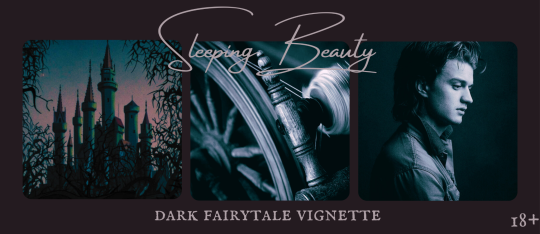
Prince!Steve x Sleeping Beauty!Reader Masterlist
These are short blurbs with figurative fairy tale themes. Smut, PIV, Dirty Talk, Spit as lube. All kinds of fun. Without further ado...

In the flickering embrace of candlelight, you stir from your slumber, your senses waking with the ghost of his warm lips – the kiss of your dark prince. The room is fragrant with the essence white roses and cloves. A soft flicker of the flames casts dancing shadows upon the ornamental fairies and witches. The pleasant scrape of his blunt nails leaves behind pebbled skin as they travel over your ribs, your stomach, your thighs, igniting trails of fire. The exquisite ache of your need deepening as it radiates from the bottom of your stomach, like the desire from dreams that have filled your sleep, until it controls every cell.
Your fingers entwine in the long, golden-brown locks at the nape of his neck as you arch your back, your gaze fixed upon the gilded antique mirror suspended from the ceiling. The rich hue of your breasts' hardened peaks, visible through the diaphanous silk of your chemise, the ties carelessly undone. An opaque triangle, proof of your desire, burgeons at your center as your restless legs writhe against the midnight-blue velvet that drapes the baroque four-poster bed. A place where you've lain resting for far too long without his caress.
The freckled skin of his shoulders and back glides smoothly, rolling with every gesture as the material of your shift is inched higher and higher until it's gone completely, sliding like a waterfall onto the cold stone floor.
“My beauty.” His breath fans over the glistening wetness of your pussy, like moonlight on water. Carvings of golden acanthus leaves scroll up the posts behind him, framing his head in a regal crown.
“Please,” you whisper on a needy sigh as his lips trail along your navel.
"Shhh.” He silences your pleas as the rough skin of his large hands envelops the softness of your breasts, kneading and teasing and pushing them together, a feast for his black eyes. “Let me take you,” he murmurs, his desire and devotion evident, “I’ll make you my queen. And then, my love, I shall be yours to rule."
His britches are pushed down his hairy legs, forgotten amongst the bedclothes. He's hard and long as he kneels proudly before you. You wet your lips, hungry, as your eyes follow the veins of his thick shaft to the thatch of hair at his base.
His fingers clasp firmly around your calves, urging your knees toward your ribs, parting you with deliberate intention. Spit escapes his parted lips, dripping down your seam, collecting at your entrance.
“Watch,” he orders as his hand circles his base, guiding his crown at your eager opening. His gaze locks with yours as he thrusts with a moan, filling you completely, stretching your boundaries, molding you for his pleasure. Your insides pulse and ripple around him, euphoria waking from a slumber.
He falls forward as he keens, his hand sliding around your throat, fingers gripping with a hunger that matches his lips as they close over yours, capturing your breath. Your tongues tangle in a sensual duel. 'What is your command?' he murmurs, his voice a rasp against your skin. 'I'll give you anything,' he promises, intoxicated by pleasure, the rhythm of his hips quick and relentless. He slides out smoothly, teasing until you're almost empty before driving into you with the force of a tempest.
The kiss ends with a passionate tug of your teeth on the lushness of his bottom lip. With a seductive grace, you guide him nearer, savoring the taste of desire as you press tender, lingering kisses along his temple, trailing down until his ear is at your mouth. “Make me cum.”

AN: Thanks for reading. 💋-Jelly
#steve harrington#stranger things#steve harrington x reader#steve harrington fanfic#steve harrington smut#stranger things fanfic#dark fairytale
138 notes
·
View notes
Note
I see that you're interested in architecture, so i am going to bother you with a half-formed headcanon I've had for a while: do you think Imladris has some intentional similarities to Gondolin
I love this!! I definitely think there were some intentional similarities and differences. For starters, Imladris is only one house whereas Gondolin is a city of many houses, so part of me pictures imladris as a miniature version of Gondolin or just a section of it. I'm not sure if you're familiar with the orders of Greek architecture (its just the different types of columns in classical greek architecture, ill put a photo below for reference) but I have an obsession with that right now.
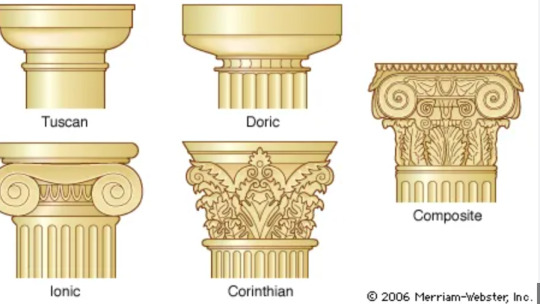
I associate Gondolin mostly with the Ionic order columns that just have volutes on the crown. i feel like Gondolin was a product of what I like to call the architectural revolution of the Noldor (not that they weren't always in the middle of a tiny revolution), so the ionic order gives off that sort of modern but still pretty primal vibe. When I think of Imladris i think of the composite order that has BOTH acanthus leaves from the corinthian column but also volutes from the ionic order at the crown. It's a little more intricate but still elegant and i feel like the volutes at the crown give it a touch of Noldor that SCREAms Noldor (ahem... Kanafinwe's influence on Elrond anyone?).
The professor Tolkien himself could tell me that its just a coincidence that Elrond set up his house in a hidden valley, just like Gondolin, and it had nothing to do with any influence that Gondolin's story had on the location of Imladris, and I wouldn't believe him. There's also something to be said for Turgon's "None may enter" and Elronds "house of healing."
I also think that while the art and architecture Turgon had going on in Gondolin was more or less "we're in Beleriand, a new world, we're BUILDING a new world" and Elrond is living in the aftermath of that so while Gondolin is full of great gold statues and intricate ornaments Imladris is full of story-telling tapestries and stone sculptures of great heroes of middle earth and some that are not deemed heroes, but Elrond puts them there anyway(I'm not crying because one is missing a hand).
Elrond is a mosaic of all other elven lords before him, and i think the architecture of imladris reflects that too.
#imladris#Imladris#Gondolin#Elrond#Turgon#the silm fandom#the silmarillion#tolkien#silmarillion#architecture
21 notes
·
View notes
Text
SEPTEMBER 2024 HORRORSCOPES
to receive intermittent dispatches of fake astrology, please sign up for my art newsletter here.
VIRGO:
YOUR SECRET GARDEN IS LOOKING A LITTLE NEGLECTED. THE BRICKS IN THE WALLS ARE COMING LOOSE AND THE NASTY COLONIAL IVY HAS TAKEN OVER THE ACANTHUS PATCH. THE CAST IRON TUB IN THE MIDDLE IS RUSTING OUT AND YOUR BIRD BATH IS RATHER DRY. IT SEEMS YOU HAVE NOT VISITED HER IN A VERY LONG TIME. WHAT HAS FADED FROM THE PALACE OF YOUR INTERNAL SOLITUDE, TO LET THIS PLACE WITHER? PERHAPS YOU HAVE DECIDED THAT PROPERTY IS THEFT!! OR MAYBE ITS JUST THAT A SECRET GARDEN IS A BIT TOO MUCH YARD WORK.
LIBRA:
TEN YEARS AGO DID YOU KNOW THAT THE FINGERS YOU TRACED THE PATTERN OF KNOTTY WOOD WITH WOULD KEEP GROWING? NOT MUCH, SURE BUT MILLIMETER BY MILLIMETER THOSE FLESHY DEAD ENDS OF THE BODY WOULD THRUST EONICALLY OUT INTO THE AIR, DISPLACING MOLECULES AND GROWING YOU CLOSER TO ALL THAT YOU REACH FOR. THIS OCCURS WHETHER OR NOT WHAT YOU REACH FOR IS WORTH THE STRAIN OF CELL RENEWAL YOUR BODY FURIOUSLY PARTAKES.
SCORPIO:
THE GIFT OF OPPOSITES LIVES IN YOU LIKE A FUN LITTLE JOKE AND YOU ARE ADEPT AT EXTERNALIZING IT. ONE THOUSAND PILLOWS DECORATE YOUR BED FOR VARIOUS FORMS OF JOINT SUPPORT WHILE YOU SLEEP UPON A STONE MATTRESS THAT YOU POURED YOURSELF OF CONCRETE THAT, IN ORDER TO COMBAT THE WORLD SAND SHORTAGE, YOU MANUFACTURED BY GRINDING DOWN GLASS BOTTLES AND OTHER REFUSE TO EXACTLY THE RIGHT SIZE GRIT FOR BOUTIQUE STONE-BED POURING. WOW.
SAGITTARIUS
AT SOME POINT WE ESTABLISHED NEW LINGUISTICS FOR GATHERINGS OF ANIMALS, A CONVENTION THAT PERHAPS BETRAYS OUR MYTHIC ATTACHMENTS: RAVENS AND LEMURS ARE “CONSPIRACIES” WHILE FROGS FORM AN ARMY AND A WRITHING MASS OF COCKROACHES CONSTITUTES AN INTRUSION. HUMAN GROUPS MAY HAVE QUAINTER AND BLANDER DESCRIPTIONS: “COMMUNITY” “ORGANIZATION” “PUNK HOUSE,” BUT UNFORTUNATELY FOR YOU, YOUR FELLOW HUMANS ARE LIKELY TO LABEL YOUR PARTICULAR GROUPING OF FREAKS A CONSPIRACY ANYWAY.
CAPRICORN:
ON A WALK IN THE FOREST YOU MAY BE TEMPTED TO NOTICE THINGS THIS FALL: THE TURNING OF SPICEBERRIES FROM GREEN TO RED, THE GLINT OF AN ORANGE MUSHROOM THAT MAKES DELIGHTFUL VEGAN TREATS, THE FEELING OF THE STONES IN YOUR SHOES AS THEY PRESS SHARP ON YOUR METATARSALS. DO AWAY WITH THIS SENSE OF PRESENCE!! NOW IS NOT THE TIME TO “FEEL” ONES “FEELINGS”!! NOW IS THE TIME FOR ACTIONS! WEAR PLATFORMS SO YOU CANNOT ACTIVELY FEEL THE GROUND THROUGH YOUR SHOES EVER!! LISTEN TO PODCASTS ALL THE TIME SO THE SOUNDS OF THE WORLD ONLY TRICKLE IN THROUGH A SOURCE OF CONSTANT ENTERTAINMENT!! LOSE YOURSELF A BIT BECAUSE NOTHING IS AS GOOD OR AS BAD AS IT SEEMS.
AQUARIUS:
THE PRESENCE OF PARTYGOERS ON THE STREET BEYOND YOU ALERTS YOU A SENSATION YOU ARE FAMILIAR WITH AS AN URBAN DWELLER: SOME CALL IT SONDER BUT I FIND THAT WORD A BIT TOO TWEE: IT’S MORE LIKE AN ANNOYING BUT PLEASURABLE KNOWLEDGE THAT SOME PEOPLE NEAR YOU WILL BE UP TO HIJINKS YOU WILL REMAIN BLISSFULLY UNAWARE OF UNLESS YOU ARE AWOKEN AT 3AM DUE TO THEIR PREDICTABLY LOUD RETURN. WHAT A GIFT IT IS TO LIVE TIGHTLY AMONGST OTHERS THOUGH, DON’T YOU AGREE?
PISCES:
EVERY MORNING YOU FIND THE PERFECT COUCH FOR SOMEONE AS YOU SCAN THE INDEXES OF CIRCULATING OBJECTS AND LOCATE THAT GREEN VELVET STUNNER WITH YOUR PERFECT TASTE. THE DAY BREAKS OVER AND OVER AGAIN AND EACH MORNING IS ANOTHER DIVORCING LESBIAN COUPLE’S POSTING A PICTURE OF AN EXCELLENT KITCHEN ISLAND AND YOU, IN A BURST OF LOVING WARMTH TO YOUR PRIZED FRIENDS, SEND IT TO THE EXQUISITE CREATURE THAT MAY CHOP VEGETABLES ON THE WELL-OILED BUTCHER BLOCK. YOU HAVE ACHIEVED A SISYPHEAN PERFECTION OF LOCATING BOULDERS NO ONE WILL EVER ROLL UP THEIR THIRD FLOOR WALK-UP BUT IT’S OKAY TO CALL IT WHAT IT IS: BLISS.
ARIES:
IT IS YOUR WHINING SEASON - YOU MATCH THE LONG SLOW DRUM OF THE LATE SUMMER CICADAS AS THEY GET SLOWER AND SLOWER IN THE SEPTEMBER BREEZE. YOU ARE PERFECTING YOUR PLAINTIVE HARMONIZING; YOU ARE MAKING IT KNOWN THAT YOU WILL BE HEARD THROUGH THE ARCHITECTURES. MAYBE YOU WILL EVEN PEE ON SOMEONE’S WINDSHIELD ABOUT IT. YOUR VOICE, DESPITE YOUR EFFORTS, IS RATHER PLEASANT TO LISTEN TO AT THESE PITCHES. YOU MAY NOT FIND YOUR NEEDS MET BUT YOU WILL HAVE CREATED AN EXPERIMENTAL SOUNDSCAPE SO LIKE, APPLY TO SOME GRANTS?
TAURUS:
ITS REALLY BEEN A BARRAGE OF…STUFF…LATELY. WHAT KIND OF STUFF? BITS AND BOBS, TINSEL, A VERITABLE TONNAGE OF PURE SHEET ROCK, A CACAPHONY OF SLAMMING DOORS, DRYER LINT AND USED TISSUES, ASHES, ASHES, ASHES. THE REPETITION OF THE PHRASE “NOT DEAD YET,” ONE OR TWO MEWLING KITTENS? A LOT OF KINDS OF SHIT CAN FLY THROUGH ONE LONELY PLANET’S ATMOSPHERE, FAR MORE THAN IS POSSIBLE FOR YOU TO DODGE. SO…DON’T?
GEMINI:
SOMETIMES YOU SINK YOUR TEETH OR TOES OR OTHER PROTRUDING BODY PARTS INTO SMALL GROOVES EXACTLY THE RIGHT SHAPE AND SIZE FOR SAID PARTS. IT FEELS SO GOOD - LIKE A SANDPAPER TONGUE BUT DRY AND PERFECT AND YOU ARE ABLE TO FORGET ALL THE POCKETS AND HOLES THAT DON’T FIT RIGHT. EACH DAY IS A NEW CHANCE TO FEEL LIKE A WELL MACHINED JIGSAW PUZZLE, HOWEVER, IF YOU SPEND ALL DAY SEARCHING FOR SUCH SLOTS YOU WILL FORGO ALL THE POSSIBLE PLEASURES OF MISALIGNMENT.
CANCER:
IN AN ALLEYWAY BETWEEN TWO EMPTY HOUSES SITS A GILDED MIRROR NEXT TO A BAG OF TRASH. THE MIRROR AT SUCH AN ANGLE REFLECTS ONLY POWERLINES AND SKY WHILE ITS GARBAGE BESTIE GLINTS DARKLY AND STEAMS WHILE THE SUN SHINES. IF THESE WERE YOUR SCRYING TOOLS WHICH WOULD YOU COUNT ON? THE CLARITY OF GLAMOUR LAID WASTE? THAT’S THE OBVIOUS CHOICE, MIRRORS ARE WELL KNOWN SCRYING OBJECTS BUT I CAN TELL THE GARBAGE SEDUCES YOU WITH ITS LITERALISM AND VERACITY. THAT’S SOMETHING YOU MIGHT WANT TO UNPACK EVENTUALLY.
LEO:
NO ONE CAN KNOW WHAT THEY’VE MISSED - THAT’S WHY FOMO IS A FAKE FEELING AND THE DEAD DON’T UNDERSTAND WHY YOU ARE GRIEVING, THEY JUST WANT TO HANG OUT ON YOUR SHOULDER AND WATCH WHAT YOU ARE DOING BECAUSE YOU ARE THEIR BELOVED SIM AND THEY HOPE THAT YOU EAT BREAKFAST AND DON’T GET CRANKY. THEY JUST WANT YOU TO GO DANCING AT THE SIM CLUB WITH YOUR SIM MUSIC THAT IS NO LONGER COMPREHENSIBLE TO THOSE THAT HAVE SEEN THE ENTIRETY OF TIME AT ONCE. SO MAKE SURE YOUR CEREAL IS FIBER RICH AND YOUR SHOES HAVE GOOD INSOLES, YOU HAVE A LOT TO DO TODAY.
5 notes
·
View notes
Text


A few years ago, and a lifetime away - I found a frame in the dumpster.
I was managing the factory for all of the J Pocker and Son Picture Frame Company stores, of which there were five in the metropolitan area. We handled all the art which came through the company, - framing, fitting, storing - it all ended up in Mamaroneck with me and the crew.
Because of midtown Manhattan trash laws, that particular store sent their customer discarded frames out to us to dispose of. This frame arrived with the rest of the trash.
In the city, the rich, ancient dowagers usually arrived at the frame counter in the company of their “Designer” (which is a nice word for “interior decorator” - absurd thieves who convince the wealthy that all taste and discernment belongs only to themselves)
They are a plague which infest the homes of the rich and famous. The old lady with the checkbook plonks down that Hermes Birkin Bag on the table, and we are off to the races….
Somehow, somewhere, I don’t know HOW - one of these sheisters convinced their “client” to throw away this frame, and order something new and modern-made.
Circa 1810, hand turned on a circular lathe (with a kick-plate and a hand-held chisel) this frame came to life. It was applied with compo acanthus leaves, egg-and-dart running lip, and banded laurel-leaves along the back edge. Red, blue and black bole was applied - and then it was gilded in 22k gold.
I grabbed it as it was dumped off the truck, and Gary ( one of the older Fitters In the shop) made a bee-line straight toward it.
He wanted it. I wanted it, we tussled a little - and I had to pull rank on him. “I’m your boss. It’s mine. Fuck off”
I made him cut a circular mirror to fit inside it.
It’s been on my walls ever since.
But
I have a grand piano to pay for.
It’s gone off to auction land with the snarky, snorky set - ADAMS AUCTION IN DUBLIN.
Fly high and find yourself a home that will appreciate your magnificent story.
I bet Gary is STILL pissed….
5 notes
·
View notes
Text

The static remaster is finally out! Two years of devotion and support!
I decided to give him flowers that represent him and those who have waited. In alphabetical order:
Acanthus, for art and rebirth.
Almond, for promise.
Bluebell, fo gratitude.
Blue daisy, for long-term loyalty and trust.
Celandine, for joys to come.
Freesia, for freedom.
Iris, for passion and good news.
Ivy, for endurance and faithfulness.
Magnolia, for preseverance and love of nature.
Mayflower, for welcome.
Ox-eye daisy, for patience.
Purple heather, for solitude and admiration.
Speedwell, for travel.
Wisteria, for welcoming. (i know. again.)
White spider lily, for new beginnings.
Yellow orchid, for joy.
3 notes
·
View notes
Text
The Snivy Line (Oxybelis Acanthus):

Snivy are anguine grass-type Pokémon. It has an average height of 0.6m and an average weight of 8.1kg. Though it does not grow much upon evolution into Servine, which have an average height of 0.8m, most Serperior are over 3 metres long. This Pokémon is generally found in tropical forests in the western hemisphere, being found in both tropical dry forests and tropical moist forests. They can also be rarely found in montane forests and near oceans.
Like many other grass-type Pokémon, the Snivy line is capable of drawing energy from the sun through photosynthesis, using the leaves on their bodies to do so. As such, they are diurnal. While they cannot survive without this energy, it is not enough to sustain them on its own so they predate other Pokémon. These Pokémon are largely carnivores and their diet consists of reptilian Pokémon like Treecko and Kecleon, rodent Pokémon like Rattata and Sandshrew, small amphibious Pokémon like Poliwag and the eggs of avian Pokémon like Squawkabily and Toucannon.
Unlike other anguine Pokémon like Arbok and Seviper, Serperior is not venomous, being a pure grass type. They hunt by climbing trees and searching for prey, then descending upon them, fixing them in place with their piercing glares, then swallowing them whole. After swallowing their prey, these Pokémon will generally move to a resting place, like the top of a tree.
Serperior tend to lay 6–10 eggs at a time, which hatch after around 100 days. In the wild, Snivy evolve into Servine after just over a year, and then into Serperior after three more years. Snivy tend to walk upright in a bipedal manner, though start learning to slither after evolving into Servine, preparing them for their final evolution into Serperior.
While Snivy and Servine have legs, they are lost upon evolution to Serperior. It is believed that this is because the legs are no longer needed to assist the Pokémon in climbing trees, as Serperior is large enough to be able to wrap itself around the tree and ascend. Although it is sometimes believed that these Pokémon also lose their arms upon evolution to Serperior, Serperior do have two small, leaf-like arms, that are generally left folded behind their backs for ease of mobility.
These Pokémon were often prized and seen as symbols of royalty, so were often transported to places such as Kalos and Galar as gifts for monarchs. This reduced wild Snivy populations in the wild, leading to a slow decline in their population, which has since returned to stable levels due to the intervention of the Juniper Pokémon Lab in Nuvema Town, Unova.
Fun facts:
Serperior often extend their long tongue when moving, and it is believed that they use their tongues to sense in a similar manner that Pokémon like Meowth use their whiskers.
This Pokémon line often manipulate vines in order to grab things.
These Pokémon cannot photosynthesise if they are too dirty, so they clean themselves often.
A group of this Pokémon is called “a court”.
Baby Snivy are called “snakelets”.
24 notes
·
View notes
Text
More OCs. Here is Magus Helena, my beloved Mekhet of the Circle of the Crone, and my main remaining brainworm from Beyond the Sunset's Vampire the Requiem LARP chronicles.



A bored heiress turned occult scholar, she was Embraced 1899 from among the ranks of the Hermetic Order of the Golden Dawn.
As well as being head of the local Circle, she outlasted all changing of Princes in the court as Seneschal, so I had a lot of fun playing the self-serving, mysterious, manipulative evil vizier hiding behind the Mask of the Guru until she became consumed by her own studies into the Supernal and promises of power.
Due to Mage the Awakening shenanigans, she is now Hecate, Acanthus of the Mysterium.
#vampire the requiem#mage the awakening#chronicles of darkness#helena#LARP#mekhet#circle of the crone#heroforge
13 notes
·
View notes
Text
Acanthus VS Red Geranium

First, let's talk about the Acanthus
Meaning and why this flower was chosen: She is an artist, art is almost always a motive of whatever she does one way or another. The themes in her art can always be traced back to the base concepts of life, death, and everything in between, things that have fascinated her since she was young. The acanthus is a plant that symbolizes immortality and rebirth, it's also been an inspiration for countless artists. So, I believe it fits her quite well.
Description:
They are someone who will do anything to achieve their goals. Their goals always revolve around their sense of artistic beauty. Art is a factor in almost everything they do. The themes in their art can always be traced back to the base concepts of life, death, and everything in between, which often results in very morbid projects. Their pieces range from simple wood carvings to pictures drawn using the carbonized remains of animals. Also reducing the fucking city they live in to ash, leading a cult in order to do so, and breeding eldrich horrors with eachother.
Check this character post here
Now, let's talk about the Red Geranium
Meaning and why this flower was chosen:
– Red Geraniums represent determination, and they are important to this characters past.
– It was the flower his adoptive mother loved. The reason he wears his iconic red coat is because she told him this flower represents determination.
Description:
– He's determined, he's silly, he's just like me fr. He is so so sad, and so in love with life <3
– They're a pacifist who was forced to kill. Always trying to see the best in people despite the trauma they endured. In front of other people they exaggerate their goofiness, joking around, playing with kids, partying, but inside are deeply lonely.
Check his post here
8 notes
·
View notes
Note
acanthus, holly (for cyno!)
botanical headcanons | @grinmalkyn

acanthus: is your muse deceptive , or willing to lie or deceive to achieve certain means ? why or why not ?
not... exactly. c.yno prides himself on his honesty and won't outright lie to achieve anything, even if the intentions behind it are for good. however, deception is something he considers different. again, whilst he won't outright lie as part of a deception, he's not against withholding certain information or playing a part in order to achieve a goal - but only if it serves a good purpose & isn't being used selfishly.
as for the why: that's just who he is at his core. he values honesty in others and so values it in himself. he's never felt the need to lie to get what he needs. he knows he has to set a standard as the general mahamatra, too, which definitely plays a part in how he handles his actions.
holly: how strong is your muse’s sense of intuition ? are they aware of it ? do they ever fear that it is only paranoia ?
very strong. he relies on it heavily, too - he considers it a necessary skill for his job. since it has never failed him before and has always turned out to be right, paranoia is not something that's even on his radar.
2 notes
·
View notes